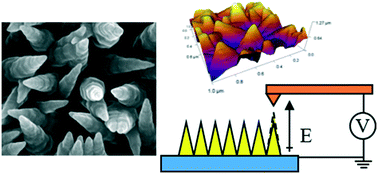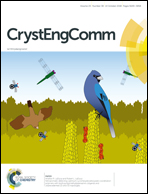Crystal growth and piezoelectric characterization of mechanically stable ZnO nanostructure arrays†
Abstract
The highest piezoelectric performance of ZnO can be achieved by utilizing the piezoelectric operation along the c-axis due to its anisotropic permanent dipole moment. However, a 1-dimensional ZnO crystal is vulnerable to mechanical stress along the c-axis because it is susceptible to breaking. The synthesis of mechanically stable ZnO hexagonal, nanopyramidal arrays is achieved by modulating the premature oxidation of a Zn precursor on a fluorine-doped tin oxide (FTO) substrate during the chemical vapor depositon (CVD) process. The as-synthesized ZnO step-wise nanostructures show a piezoelectric charge coefficient of d33 = 13.20 pm V−1 measured by piezoresponse force microscopy (PFM). Post-synthesis annealing under an oxygen condition improves the piezoelectric response by 98% to a value of d33 = 26.10 pm V−1. The growth mechanism, morphology, crystal structure, and crystal defects are characterized and discussed in this paper.



 Please wait while we load your content...
Please wait while we load your content...